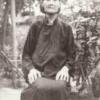Sign in to follow this
Followers
0

A couple of good martial arts articles by Phillip Starr
By
BaguaKicksAss, in Daoist Discussion

By
BaguaKicksAss, in Daoist Discussion